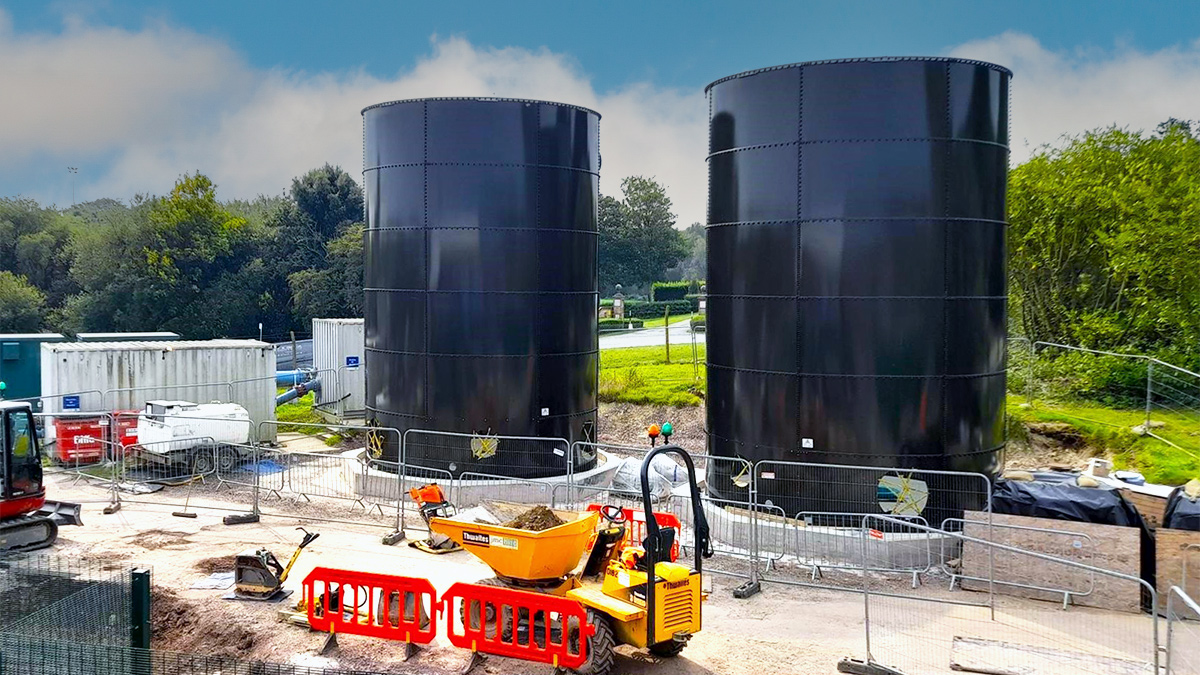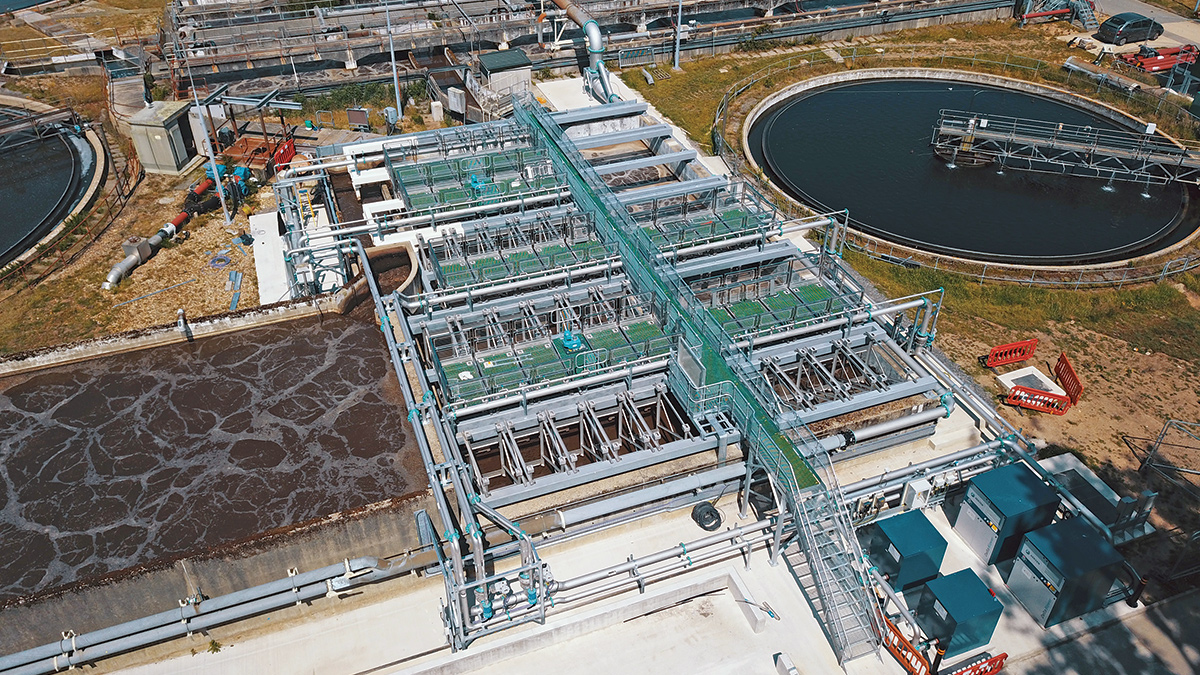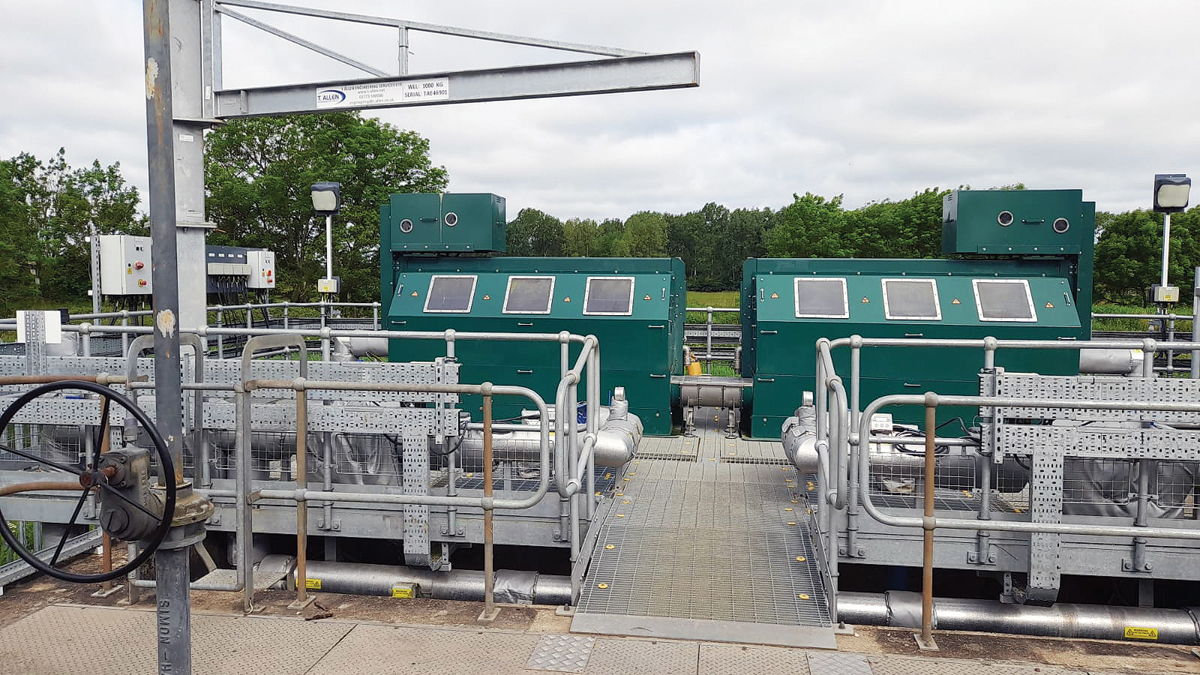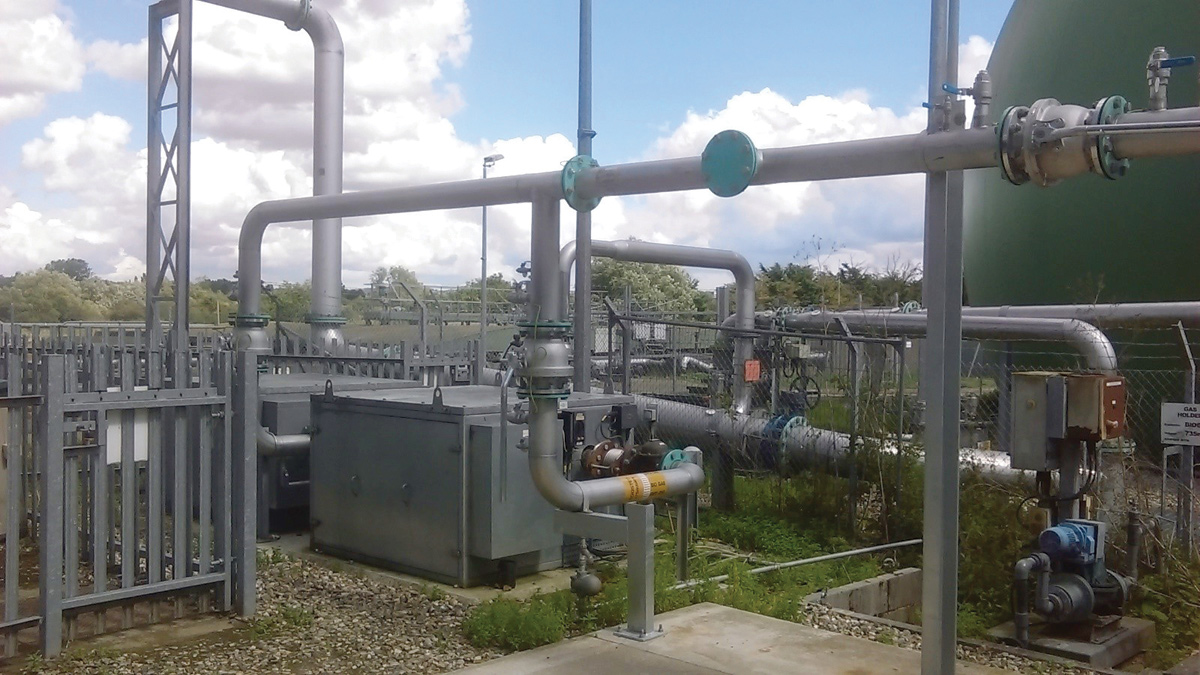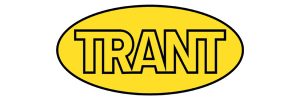Trant Engineering Ltd
C-TECH (2018)

Figure 1: C-TECH process cycle
At present, the UK wastewater treatment industry is facing an increasing number of challenges from a variety of different drivers both from a regulatory standpoint and with regards to increasing public awareness of pollution events. Such challenges include the need for a better effluent quality with low levels of phosphorus, ammonia, and total nitrogen (among others), as well as meeting this improved effluent without the need for chemical dosing or increasing site footprints. This paper details the C-TECH cyclic activated sludge technology from SFC Umwelttechnik and delivered by Trant Engineering, which is able to satisfy these drivers in a single treatment step.
Phosphorus and nitrogen consents
The Urban Waste Water Treatment Directive (UWWTD) states that discharges into sensitive areas which are subject to eutrophication carry additional consent limits for either of both phosphorus and nitrogen.
Current limits for total nitrogen are 15mg/l N for 10,000-100,000 PE sites and 10mg/l N for greater than 100,000 PE sites and for total phosphorus are 2mg/l P for 10,000-100,000 PE sites and 1mg/l for greater than 100,000 PE sites. However, these limits are expected to tighten in the forthcoming AMP periods with phosphorus limits decreasing to as low as 0.1mg/l. Furthermore, as shown in Figure 2 (below), the number of sensitive areas within the UK has increased significantly since the UWWTD’s conception in 1994 and is expected to increase further.

Figure 2: Cumulative number of sensitive areas in the UK since from 1994 to 2011 (Department for Environment, Food and Rural Affairs, 2013)
Both these factors highlight the need for water companies to invest in nutrient removal treatment processes to ensure they remain compliant in the years to come. A scarcity of available land for construction and financial constraints from Ofwat also calls for low footprint and low TOTEX solutions to be implemented for nutrient removal.
The C-TECH process
The C-TECH process is fundamentally an adaptation of the sequencing batch reactor (SBR) process, whereby secondary biological treatment and tertiary settling are combined in a single tank. However, with the C-TECH, two or more batch tanks are installed in parallel with their sequences out of phase with each other allowing for a continuous flow through the system. Thus no upstream buffer tank is required, unlike traditional SBR systems, which ultimately reduces the overall site footprint by approximately 50%. Such a process is known as cyclic activated sludge.
The C-TECH system consists of several circular or rectangular batch reactor basins each containing an anoxic-anaerobic selector zone, aeration zone, internal recycle, decant arm, and oxygen uptake rate (OUR) based aeration control system.

Figure 3: Typical C-TECH Arrangement
Cycles
The process is broken down into three distinct stages that operate on a cycle: fill/aerate, settle, and decant.
- Fill/aerate: During the fill/aerate stage water enters a single C-TECH basin into the aerated zone via the anaerobic selector. Throughout this fill stage, the aeration zone is continually aerated at a rate controlled by the OUR control system and a portion of the sludge is constantly recycled to the inlet of the selector. The design of this selector and recycle rate combined with the OUR control system allows for the formation of special macroflocs in which simultaneous nitrification/denitrification, BOD5 removal and bio-P removal occurs.
- Settle: During the settling phase, the inlet to the particular basin is closed, the internal recycle is stopped, and the sludge formed in the previous stage aggregates as a blanket and settles to the base of the reactor tank leaving a top layer of clear treated effluent. In typical wastewater applications, the settled sludge layer has a mean biomass concentration of around 10g/l.
- Decant: In the decant phase, the moving weir decanter moves from the top water level to the bottom water level to remove approximately one third of the reactor volume which will be clear treated effluent. The decant arm also features a scum guard which prevents floating solids from discharging into the decanter. At the end of the decant phase, the decant arm is returned to its parking position and a portion of the settled surplus sludge left in the reactor basin is discharged.
This cycle is typically 4 hours for dry weather flow and is repeated continuously as shown in Figure 4 (below) and Figure 1 (top). Having multiple reactor basins in parallel, with their cycles out of phase with each other, means that the total system can handle continuous flow without the need for an upstream buffer tank.

Figure 4: Typical cycle sequence and times for a four basin C-TECH plant
The flow and aeration control systems are designed with dry weather flow and wet weather flow operating protocols as standard, with maintenance cycles available with three or more parallel reactor basins. The transition between cycles, whether automatic or manual, is done via the PLC system without affecting the continuity of the plant operation.
OUR (oxygen uptake rate) control
The OUR control system uses only a measurement of the dissolved oxygen within a reactor basin to determine the oxygen uptake rate of the biomass. In doing so, the required duration of the fill/aerate cycle and the rate of aeration to achieve complete nitrification and BOD/COD removal is calculated and implemented. Employing the OUR control system prevents over-aeration of the reactor basin allowing for energy savings.
Several operational C-TECH plants of varying capacities between 9500 and 109,800 PE were investigated to quantify the required energy difference between plants using OUR control and plants using a constant DO set-point. Figure 5 shows the energy required per kg COD entering the C-TECH process for plants with and without OUR control.

Figure 5: C-TECH energy usage for plants with and without OUR aeration control compared to traditional ASP and SBR processes. kWh/kg CODin calculated assuming 0.12 kg CODin / PE.d
On average the energy required for C-TECH plants using OUR control is 27% less than those without, and compared to traditional ASP and SBR processes, the energy requirement of the C-TECH process is still up to 25% less.
Macrofloc formation
he anaerobic selector zone and internal recycle of the C-TECH system allows for the formation of so-called macroflocs. The enhanced size of these macroflocs means that each floc contains an external aerobic zone and an internal anoxic/anaerobic zone even during the aeration phase of the C-TECH process cycle. This means that both nitrification and denitrification occur simultaneously within the same reactor zone and cycle phase, therefore reducing the required reactor volume/overall cycle time when compared to traditional ASP or SBR processes, as well as eliminating the need for mixers in the would-be anoxic zone/phase. A representation of this simultaneous nitrification/denitrification within the macroflocs is shown in Figure 6.

Figure 6: Macrofloc nitrification and denitrification
Enhanced Bio-P removal
The anaerobic selector zone also provides the perfect conditions for the growth of PAOs (polyphosphate accumulating organisms) within the macroflocs. The mechanism for removal begins with the PAOs releasing all of the phosphate contained within them in the selector zone and then uptaking phosphate from the surrounding bulk liquor within the aerated zone. The phosphate rich organisms are then periodically removed with the settled sludge during the period of sludge wasting in the decant cycle.
The C-TECH can provide treated effluent phosphorus concentrations of < 1 mg/l without the need for chemical dosing (depending on actual C:P ratio). If more stringent phosphorus limits are introduced, i.e. < 0.1 mg/l then chemical dosing (such as ferric chloride) and post-treatment will still be required. However, the amount of chemical required will be significantly less than that required in a conventional ASP or SBR process.
Case study – Grossarl (Austria)
The Grossarl plant in Austria gives a good indication of what the latest C-TECH design can achieve in UK conditions. The 18,000 PE, 3,440m3/d (DWF) plant was built in 2004 as an upgrade to an existing two-lane activated sludge plant.

Grossarl WWTW, Austria, 18,000 PE
Two new C-TECH lanes were built and brought online either side of the existing lanes, and then the two existing activated sludge lanes were converted into two further C-TECH lanes, creating a four-lane system all whilst keeping the site operational. The total volume of the four reactor basins is 5,200m3 with a footprint of 1130m2.
Grossarl’s influent consists of a mixture of domestic and industrial wastewater with typical water quality values shown below. Also shown in Table 1 are the design influent and average effluent qualities for 2014. Even during the coldest month, January, when the water temperature is below 8°C, high levels of biological nutrient and BOD5/COD removal are still achieved.

Table 1: C-TECH Grossarl Influent and Effluent Data 2014
Worldwide and UK installations
There are currently more than 600 C-TECH plants installed worldwide, with capacities ranging from 200 to 1,200,000 PE, and treating a wide variety of wastewater types in a range of climatic conditions.
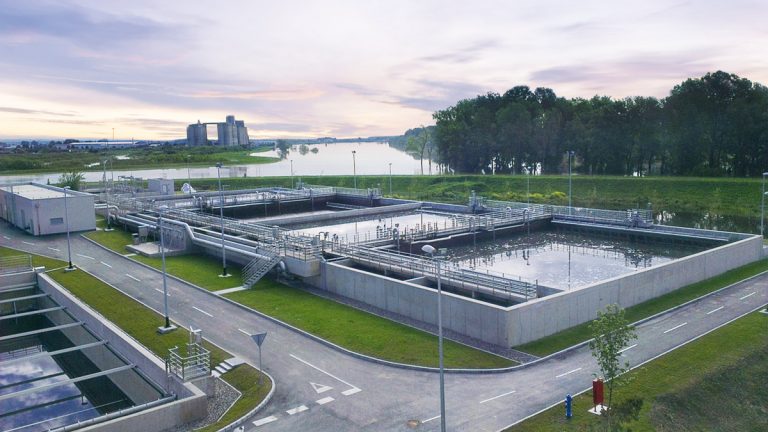
Slavonski Brod WwTW, Croatia, 80,000 PE
Wastewater types
- Domestic wastewater.
- Food and beverage industry.
- Paper industry.
- Textile mills.
- Pharmaceutical and chemical industry.
- Petrochemical industry.
- Landfill leachate.
In the UK and Ireland, there are several C-TECH plants that were all built in the early 2000s with the application of carbonaceous removal only. The reintroduction of the C-TECH to the UK will bring all of the advanced features, such as simultaneous nitrification/denitrification and enhanced bio-P removal, which have been well developed over the past 15-20 years.

(left) Amecameca WWTP, Mexico, 63,936 PE and (right) Zywiec, Poland, 207,000 PE
Summary
The C-TECH process has had great success worldwide with over 600 installations and it is now a fitting technology to meet the rising needs of the UK wastewater industry. C-TECH advantages include:
- Continuous throughput allowing for elimination of buffer tank leading to (approximately) 50% reduction of plant footprint compared to conventional ASPs.
- Anoxic-anaerobic selector designed for:
- Formation of macroflocs for simultaneous nitrification and denitrification.
- Formation of PAOs for enhanced bio-P removal.
- Suppression of bulking sludge forming bacteria.
- Excellent effluent quality guaranteed – BOD:SS:TN:TP of <10:10:10:1 mg/l.
- Capital savings of around 10-20% when compared to conventional ASPs.
- Energy savings of up to 25% when compared to conventional ASPs.
- Very simple operation, with optional OUR control, and DWF, WWF and maintenance cycle protocols as standard.

(left) Jelutong STW, Malaysia, 1,200,000 PE and (right) Tychy WwTW, Poland, 89,100 PE
Of course, not all wastewater treatment sites are equal; therefore the C-TECH process and cycle design can be adapted to:
- Nutrient removal or removal of BOD5/COD only.
- Simultaneous sludge stabilisation.
- Nitrification at very low temperatures.
- Enhanced bio-P removal.
- With or without primary settling tanks.
- With or without anaerobic digesters.
References: Department for Environment, Food and Rural Affairs. (2013). Sensitive areas currently identified in the UK under the Urban Waste Water Treatment Directive since 1994.
This paper was prepared by B. Hazard and T. Bullen with Trant Engineering Ltd (UK), and S. Jabornig and K. Wutscher with SFC Umwelttechnik GmbH (Austria).
For more information: Trant Engineering Ltd | +44 (0) 23 8066 5544 | www.trant.co.uk



